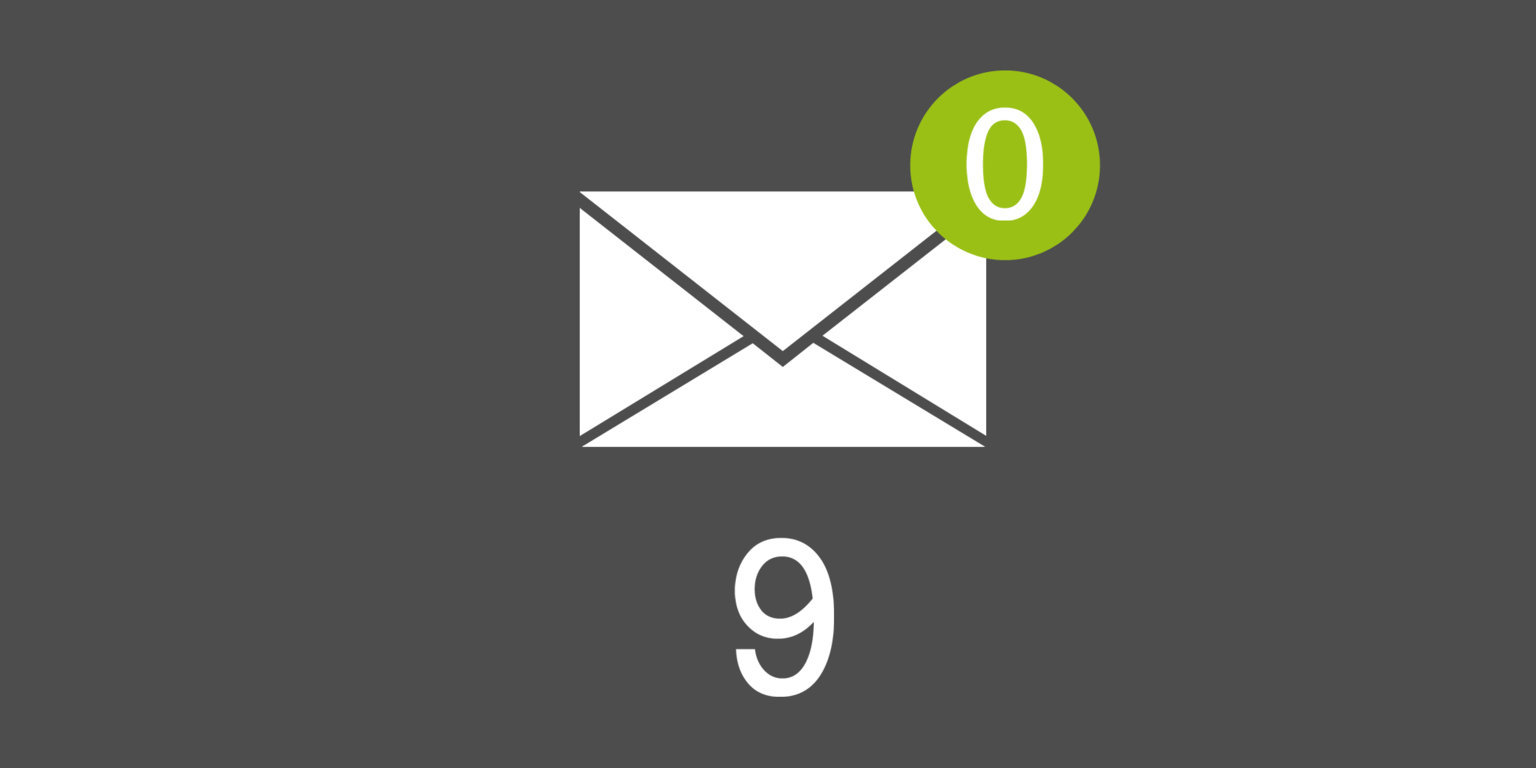Step 9: getting email to zero
Step 9 is about email and how to handle it. It discusses how to process it to zero and how to handle others’ expectations when it comes to an email reply, as well as how to make sure you don’t get lost in the flood of email messages coming in.
Welcome to Step 9 of our “10-steps to Ultimate Productivity Course”. Here I’ll share with you my best practices and tips when it comes to email. I’ll explain how I get email done every day, and how I integrate it with my productivity system.
The first thing to address is your productivity tool, and the one you choose can be Nozbe or any other tool that has most of the characteristics we mentioned in previous lessons. Your tool should encourage you NOT to “organize tasks” but to really “get tasks done” and move forward to achieve your goals!
The email chaos
Now, the other tool most of us have to use every single day is email — it’s used by everyone. Most of us see more and more messages coming day in and day out. Here are some tips that might help you get the email chaos under control.
Inbox zero
I’m a firm believer in “Inbox Zero”, meaning I try to keep my email inbox at level zero every day. I decide what to do with every incoming email: whether it’s actionable or not, if I should reply now or later, or just archive it.
When replying to email, I use a “2-minute rule”, meaning, if I know I can reply in less than 2 minutes I do it right away. As I increasingly process my email on my iPhone or iPad, I’ve learned to send away quick answers. Trust me, people prefer a quick answer than none at all.
Emailing tasks and notes to you apps
Most of the better apps out there assign you a personal email address which you can use to add information to them. I use Evernote and Nozbe daily and I email myself tasks, articles and they are automatically added to these systems.
When processing email, these “email gates” really help a lot. When an email is actionable, I send it to Nozbe, If it’s a reference material, I forward it to Evernote. It’s quick and I don’t need to leave the email application to add a task or a note.
Checking vs. processing emails
Another thing is that I no longer “check emails”. I “process emails”. I know, it sounds similar but there’s a big difference. When you process something, it’s done. When you check something, it’s still out there.
That’s why I encourage you to turn off the “auto-checking” feature in your email client and turn off “push-email-notifications” in your smartphone. Every hour/day make a conscious decision to “process email” and deal with every email message there to clean your inbox to zero.
I know it sounds very drastic and you might think people want you to check email every minute of every hour of every day. Trust me, if you communicate the expectations, they will let you change this habit.
And this way you can get an hour (or more) of focused time when you are not being interrupted by the sound of an incoming email. When people know you get back to them, they’ll let you do your job and respond to them a little later.
Email time
I actually get even more drastic than that. I don’t check email until noon every day. I’m an early riser. In the morning it’s my “creative time” and I only focus on the important tasks. It’s my time.
Only at around noon or 1 PM I fire up my email client and process my email inbox to zero. It takes me around 30 minutes. This way I can respond to my peers and be a part of the team again.
From then on I process my email every hour or so. And it takes me a few minutes each time. At the end of the day I respond to some longer emails I needed to take care of.
You see, from checking email and letting it interrupt me I’ve gone to processing email at the times I feel are good for me and not for others. It helped me find time to focus on my creative work.
Pomodoro technique
When I do my creative work, I use something called a “Pomodoro Technique”. Meaning, I divide my day into many 25-minute chunks. I work for 25 minutes straight and then relax for 5 minutes.
This technique is really great and helps me stay focused. The clock is ticking, I know I have only 25 minutes to complete a task so I just go with it. You’d be surprised how much can be done within 25 uninterrupted minutes.
This technique also helps me “get back on the wagon” when I feel it is not my best day and I’m slacking off. I just decide on one task, put the timer on, and say “let’s go” and amazingly I’m getting my productivity mojo back!
Another tip
How to start a day fresh and productive? Just write three tasks you need to get done first thing in the morning and put them next to your bed before you fall asleep. Your mind will work on these tasks when you sleep.
Let’s summarize
This is how I handle email and my focused work. Prepare your day with three key tasks, process email to zero and work in 25-minute chunks and you’ll be very productive. I encourage you to give it all a try. Good luck!

